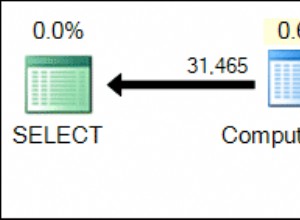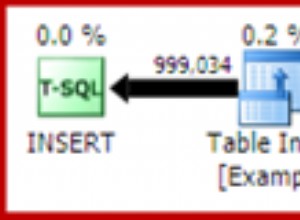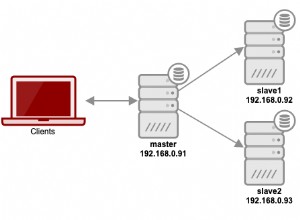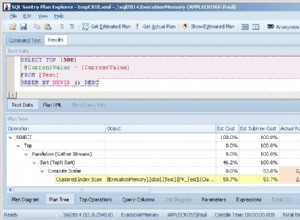Immagina la tua tabella test contiene i seguenti dati:
select id, email
from test;
ID EMAIL
---------------------- --------------------
1 aaa
2 bbb
3 ccc
4 bbb
5 ddd
6 eee
7 aaa
8 aaa
9 eee
Quindi, dobbiamo trovare tutte le email ripetute ed eliminarle tutte, tranne l'ID più recente.
In questo caso, aaa , bbb e eee vengono ripetuti, quindi vogliamo eliminare gli ID 1, 7, 2 e 6.
Per fare ciò, dobbiamo prima trovare tutte le email ripetute:
select email
from test
group by email
having count(*) > 1;
EMAIL
--------------------
aaa
bbb
eee
Quindi, da questo set di dati, dobbiamo trovare l'ID più recente per ciascuna di queste email ripetute:
select max(id) as lastId, email
from test
where email in (
select email
from test
group by email
having count(*) > 1
)
group by email;
LASTID EMAIL
---------------------- --------------------
8 aaa
4 bbb
9 eee
Finalmente ora possiamo eliminare tutte queste e-mail con un ID inferiore a LASTID. Quindi la soluzione è:
delete test
from test
inner join (
select max(id) as lastId, email
from test
where email in (
select email
from test
group by email
having count(*) > 1
)
group by email
) duplic on duplic.email = test.email
where test.id < duplic.lastId;
Non ho mySql installato su questa macchina in questo momento, ma dovrebbe funzionare
Aggiorna
L'eliminazione di cui sopra funziona, ma ho trovato una versione più ottimizzata:
delete test
from test
inner join (
select max(id) as lastId, email
from test
group by email
having count(*) > 1) duplic on duplic.email = test.email
where test.id < duplic.lastId;
Puoi vedere che elimina i duplicati più vecchi, ovvero 1, 7, 2, 6:
select * from test;
+----+-------+
| id | email |
+----+-------+
| 3 | ccc |
| 4 | bbb |
| 5 | ddd |
| 8 | aaa |
| 9 | eee |
+----+-------+
Un'altra versione è l'eliminazione fornita da Rene Limon
delete from test
where id not in (
select max(id)
from test
group by email)




